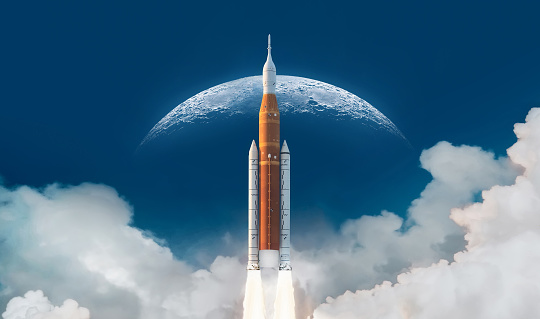NASA's New Space Launch System (SLS) Takes One Step Closer to the Moon—and Beyond
The Value of NASA's SLS
keywords: space launch system, NASA SLS, space exploration
The SLS is a heavy-lift launch vehicle that will carry the Orion spacecraft and other hardware necessary for human exploration beyond Earth orbit. It will be the most powerful rocket ever built by NASA, designed to send humans to deep space destinations including the Moon, Mars and beyond.
This is a high-level overview of what the SLS is and what it does for NASA.
How Is NASA Planning to Use the SLS and What is Its Mission?
keywords: space exploration, moon mission, mars exploration)
NASA is planning to use the SLS and its mission is to explore deep space.
NASA will be launching a new rocket, the SLS, that will be the most powerful rocket in history. It will take humans to deep space and on missions to Mars.
What are the Other Applications for the Space Launch System?
keywords: rocket engines, power plants, oil drilling rigs)
The Space Launch System is not only used for space exploration. It can also be used to launch satellites, provide power to remote areas, and drill for oil.
The Space Launch System, or SLS, is being developed as a rocket engine that will replace the old shuttle engines. The SLS is being developed with a focus on safety and efficiency.
It has been designed to be the most reliable and safest rocket ever built.
NASA has been developing this engine since 2005 with the goal of launching it in 2018.
The SLS will have two stages: one powered by liquid hydrogen and one powered by liquid oxygen. The first stage will generate 8 million pounds of thrust at liftoff and the second stage will generate 4 million pounds of thrust at liftoff.
How Much Does it Cost?
The cost of launching the SLS rocket is $1.5 billion.
Nasa is ready to send humans into deep space with its new Space Launch System (SLS) rocket, which will take astronauts on their first deep-space mission to the moon and eventually Mars.
The SLS Program, which stands for Space Launch System, will be a joint NASA, Boeing and Lockheed Martin effort to send humans back to the Moon and ultimately Mars.
The most powerful rocket on the planet will be ready for takeoff and will be on Mars by 2030, when Earth's day at the launch site is shortest. The Space Launch System rocket will be able to send payloads into deep space and deliver cargo to the ISS and other destinations in its crewed configuration, including a trip to Mars. Nasa hopes that astronauts will travel aboard SLS as soon as 2024."
Colonization of Solar System in Far Future
The solar system is the material environment where planets, dwarf planets, artificial satellites and various other bodies orbit. It is more commonly referred to as the Solar System or simply the Universe. The term includes most of the objects that gravitationally interact with Earth's orbit: planets and asteroids. The solar system formed 4.6 billion years ago from the collapse of a giant molecular cloud through the gravitational attraction of gas molecules or dust particles into small erstwhile clumps, called protoplanets or planetesimals.
Colonization of planets and moons in the solar system by humans. Solar System colonization is an exercise that’s been proposed for some time in the future and is a key aspect of space colonization. Colonization presents a new scientific challenge, one which has been overlooked until now.
Solar system colonization is the process of establishing a human settlement, initially only in one location, on one of the four giant planets (Jupiter, Saturn, Uranus, or Neptune). The goal of such an endeavor would be to have an enclosed habitat with sufficient resources for all inhabitants; initially, there will be fewer colonists than Earth has people at present.




Comments
Post a Comment